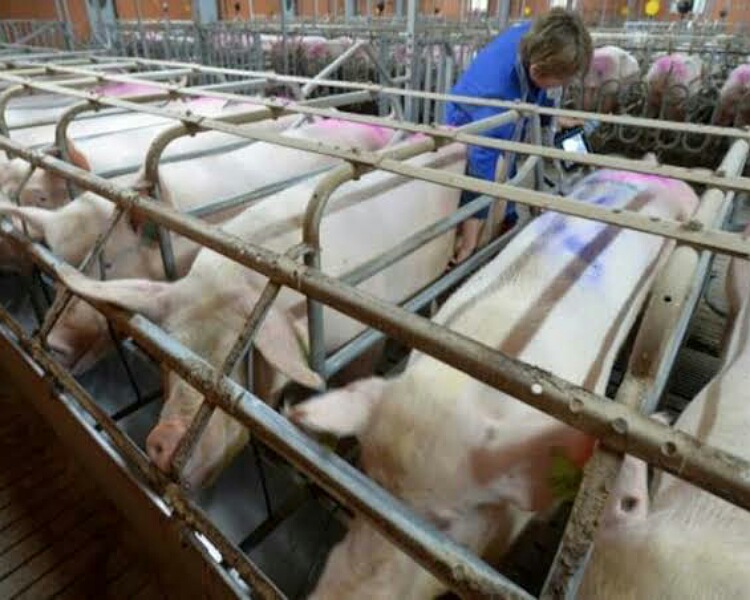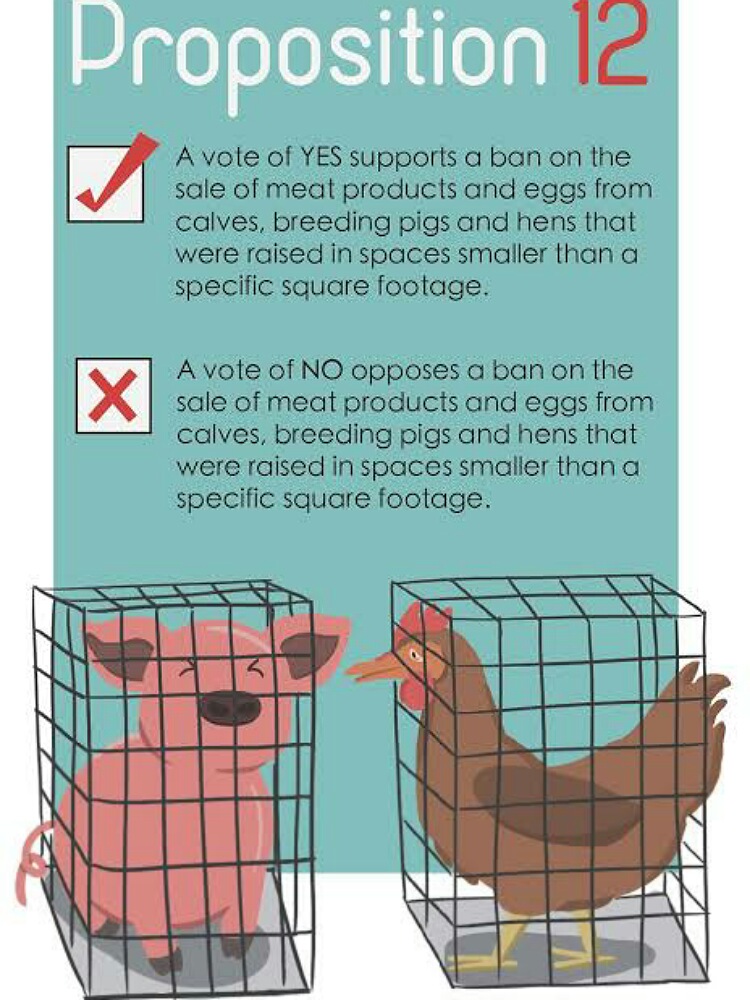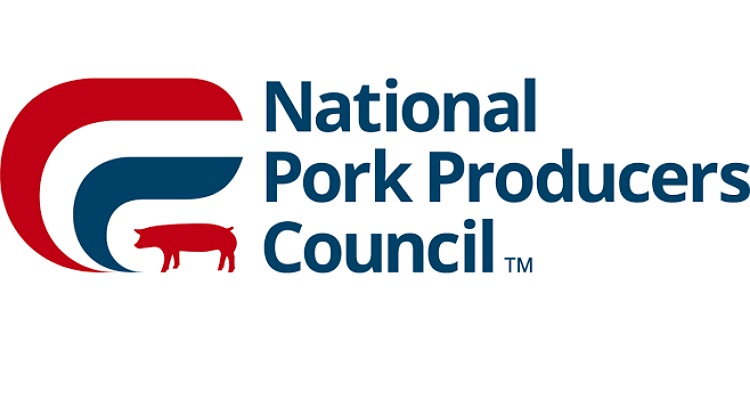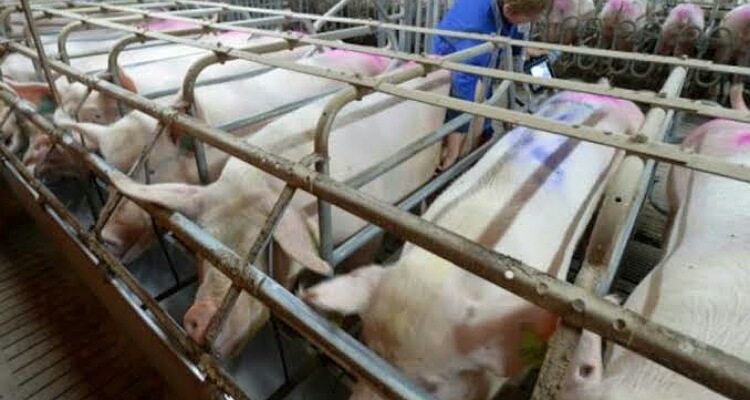The pork-eating public of the world should know about gestation crates. There is a case in supreme court of the USA against it. The case National Pork Producers Council v. Ross would come up for hearing soon. What exactly is this case?
What are Gestation crates?
Not many of us are aware of how females pigs or sows are reared in the world for pork. There are some grim and disturbing realities associated with the pig farming in many countries of the world including the USA.

These gestation crates started in the 1960s and gained popularity in the 1990s. Earlier, pigs used to roam free and scavenge on city streets and ate whatever they could find. Later they had farms to feed on in summer and corn in winter. But they were still free to roam around and not kept captive.
But once indoor farming came in, female pigs are housed in tiny cages in which they can bearly move. They get pregnant by artificial insemination 3 or 4 times in 3 to 4 years. Every year, they have 2 to 3 litters. But during all these 4 years, the pigs are caged under inhumane conditions. Their excreta falls on cement, plastic or metal floors below from where it is easy to clean. The place is so small that they cannot even sleep on their sides and often sleep on their chest.
When they are ready to give birth, they are shifted to farrowing cages that are slightly bigger but still uncomfortable. The babies are in another attached cage from where they can feed on the mother.
The legal angles
Pork producers claim that they put them in cages so that they do not fight and kill each other!!! Temple Grandin, author and animal scientist disagrees. He says:
“Gestation crates for pigs are a real problem,”
“Basically, you’re asking a sow to live in an airline seat.”
Sows in this cage are in pitiable state. Many bang their heads on the metal cage walls and bite the rods to get free. In the process, they hurt themselves. Infections occur. They are under a lot of stress. And this also impairs the immune system. Besides these physical aspects, it is not right to cage them in such small cages. It is inhumane.
Experts against the practice say that if one looks into the eyes of these pigs, he or she might not be able to look at self in the mirror.
Proposition 12
In 2018, 63% of the voters from California supported proposition 12 and asked for phase out and ban of these gestation crates. In proposition 12, there are some standards for confinement of pigs, laying hens and veal calves. Each pig should have at least 24 square feet of space. It states:
“Pigs should have enough space to lie down, stand up, fully extend limbs, and turn around freely.”

Pork producers resist the law
The pork producers have resisted this new law and gone against it in the court. And the court will hear on it soon. The pork producers say that they will have to invest heavily in order to comply with the new law. Besides, it will increase pork prices. Biden administration is with the pork producers.
Also, read Making Pork chops with creamy mushroom sauce Recipe, Its Instructions, And Ingredients

The pork producers argue that law cannot affect interstate trade. But 9 states of the USA have restricted use of the gestation crates. And European Union has also banned their use in the pork industry. Burger King, McDonald’s and such fast food chains have asked their suppliers to phase out the crates, but progress is slow.
